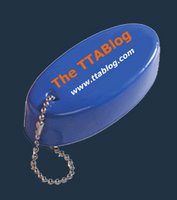With the retirements of Chief Judge Gerard F. Rogers at the end of 2024, and Judges Peter W. Cataldo and Karen S. Kuhlke last month, the Board’s membership now stands at twenty-seven (27) Administrative Trademark Judges. The current roster is set forth below, beginning with Acting Chief Judge Thomas V. Shaw and then proceeding alphabetically.
Shaw, Thomas V. (Acting Chief Judge): Appointed to TTAB in 2011. Prior Professional Experience: Associate Solicitor at the USPTO; Managing Attorney; Senior Attorney; Trademark Examining Attorney; Education: B.A., George Washington University; J.D., University of Miami School of Law.
Adlin, Michael B.: Appointed to TTAB in 2012. Prior Professional Experience: TTAB Interlocutory Attorney; USPTO Office of External Affairs; Private Practice; Education: B.A., Duke University; J.D., Boston University School of Law.
Allard, Martha B.: Appointed to TTAB in 2021. Prior Professional Experience: Private Practice (Nashville); Education: B.S. University of Kentucky; J.D., Western New England University School of Law.
Bradley, Jessica D.: Appointed to TTAB in 2024. Prior Professional Experience: Private Practice ; LexisNexis; Education: B.A., George Washington University; J.D., Catholic University of America Columbus School of Law.
Brock, Elizabeth K.: Appointed to TTAB in 2024. Prior Professional Experience: Private Practice; Education: B.A., University of Michigan; J.D., Wayne State University Law School.
Casagrande, Thomas L.: Appointed to TTAB in 2023. Prior Professional Experience: Private Practice (Texas), USPTO Associate Solicitor 2012-2023; Education: B.A., University of Pennsylvania; J.D., University of Connecticut School of Law.
Coggins, Robert H.: Appointed to TTAB in 2017. Prior Professional Experience: Trademark Examining Attorney; TTAB Interlocutory Attorney; Education: B.A., Davidson College; J.D., Wake Forest School of Law.
Cohen, Wendy B.: Appointed to TTAB in 2023. Prior Professional Experience: Private Practice, 1998-2012, TTAB Interlocutory Attorney, 2012-2023; Education: B.A, University of Missouri - Columbia; J.D., University of Missouri - Columbia School of Law.
Dunn, Elizabeth A.: Appointed to TTAB in 2019. Prior Professional Experience: Trademark Examining Attorney; TTAB Interlocutory Attorney; Education: B.A., Boston University; J.D., American University Washington College of Law.
Elgin, Jennifer L.: Appointed to TTAB in 2023. Prior Professional Experience: Private Practice, 1993-2020, TTAB Interlocutory Attorney, 2020-2023; Education: B.S., Cornell University; J.D., Emory University School of Law.
English, Christen M.: Appointed to TTAB in 2019. Prior Professional Experience: Private Practice; TTAB Interlocutory Attorney; Education: B.A., Boston College; J.D. Catholic University Columbus School of Law.
Goodman, Cheryl S.: Appointed to TTAB in 2014. Prior Professional Experience: Trademark Examining Attorney; TTAB Interlocutory Attorney; Education: B.A., University of Illinois; J.D., Florida State College of Law.
Greenbaum, Cindy B.: Appointed to TTAB in 2012. Prior Professional Experience: Private Practice (New York and Washington, D.C.); Trademark Examining Attorney; TTAB Interlocutory Attorney; TTAB Managing Interlocutory Attorney (2006-2011); Education: Wharton School, University of Pennsylvania; J.D., New York University School of Law.
Heasley, David K.: Appointed to TTAB in 2015. Prior Professional Experience: Private Practice (Washington, D.C.); Education: B.A., The Johns Hopkins University; J.D., University of Maryland School of Law.
Johnson, Melayne K.: Appointed to TTAB in 2020. Prior Professional Experience: Corporate Counsel; Senior Counsel, Office of General Counsel at the U.S. Department of Health and Human Services (HHS); Education: B.A., University of Michigan; J.D., Ohio State University Moritz College of Law.
Larkin, Christopher C.: Appointed to TTAB in 2016. Prior Professional Experience: Private Practice (Los Angeles, CA; New York, N.Y.); Education: B.A., Stanford University; J.D., Columbia Law School.
Lavache, Robert: Appointed to TTAB in 2024. Prior Professional Experience: Trademark Legal and Examination Policy Specialist; various other USPTO positions; Education: B.A., University of Miami; J.D., Cornell Law School.
Lebow, Mark: Appointed to TTAB in 2020. Prior Professional Experience: Private Practice (Alexandria, Virginia); Education: B.A., Florida Atlantic University; J.D., Hofstra University School of Law; L.L.M., John Marshall Law School.
Lykos, Angela: Appointed to TTAB in 2010. Prior Professional Experience: Trademark Examining Attorney; TTAB Interlocutory Attorney; Private Practice; Education: B.A., M.A., The Johns Hopkins University; J.D., Duke University Law School.
Lynch, Cynthia C.: Appointed to TTAB in 2015. Prior Professional Experience: Private Practice; Attorney-Advisor at the International Trade Commission; USPTO Assistant Solicitor: USPTO Administrator for Trademark Policy and Procedure; Education: B.A., University of North Carolina; J.D., University of Virginia School of Law.
Myles, Mary Beth: Appointed to TTAB in 2024. Prior Professional Experience: Private Practice, TTAB Interlocutory Attorney; Education: B.A., Bethany College; J.D., Columbia University School of Law.
O'Connor, Catherine Dugan: Appointed to TTAB in 2024. Prior Professional Experience: Law Clerk to Hon. Denny Chen (SDNY); private practice; Education: B.A., University of Connecticut; J.D., St. John's University School of Law.
Pologeorgis, George C.: Appointed to TTAB in 2015. Prior Professional Experience: TTAB Interlocutory Attorney; TTAB Attorney in the Office of Trademark Quality Review and Training; Trademark Examining Attorney; Private Practice; Education: B.A., University of Pennsylvania; J.D., George Washington University National Law Center.
Stanley, Lawrence T., Jr.: Appointed to TTAB in 2024. Prior Professional Experience: Private Practice; TTAB Interlocutory Attorney; Education: B.A., Indiana University; J.D., New England School of Law.
Thurmon, Mark A.: Appointed to TTAB in 2019. Prior Professional Experience: Private Practice; Adjunct Professor of Law, University of Texas School of Law; Assistant Professor of Law, Levin College of Law, University of Florida; Professor of Law at the Southern University Law Center, Southern University; Education: B.S, Louisiana State University; J.D. with high honors, Duke University School of Law.
Wellington, Thomas W.: Appointed to TTAB in 2007. Prior Professional Experience: TTAB Interlocutory Attorney; Trademark Examining Attorney; Private Practice; Education: B.A., University of Maryland at College Park; J.D., American University Washington College of Law.
Zervas, Albert J.: Appointed to TTAB in 2005. Prior Professional Experience: Trademark Examining Attorney; TTAB Interlocutory Attorney; Private Practice (New York and Washington, D.C.); Education: B.A. and J.D., University of Virginia.
Read comments and post your comment here.
Text Copyright John L. Welch 2025.


































